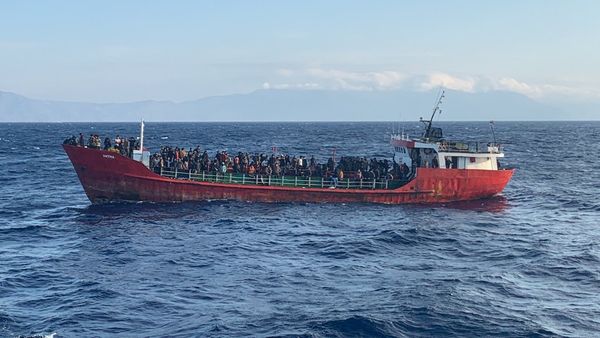
Up to 112 children aged as young as 11 are set to be forcibly sent to boarding school under controversial plans by Shetland Islands council. The most radical proposal now under public consultation would see three junior high schools closed on the smaller islands by 2016, and pupils sent to board at Anderson high school on Shetland’s biggest island, Mainland.
“It would be horrible. I’d be away from home in the hostel on my own, Monday morning to Friday afternoon,” says Emily Johnson, 11. “I’d miss my family. I wouldn’t be able to carry on with my knitting group. What happens if I turn ill? Now my mum looks after me. All this is worrying me already.”
Emily and her brother Scott, 13, attend Whalsay school’s junior high, along with their brother Ian, seven, who goes to the primary. Under proposals by Shetland council, the school could be closed, or at the very least lose its final year – secondary 4 – for pupils aged 13-14. There is an identical proposal for the island of Yell, which also has just one junior high school. Come next autumn, pupils on Unst will face the same threat as will children attending two remote schools in Sandwick and Aith on Mainland.
There is no other secondary provision on the island of Whalsay. If councillors vote to close the school, children as young as 11 would be forced to travel to Shetland’s capital, Lerwick, and become weekly boarders.
Islanders are worried and angry. In recent consultation meetings on Whalsay and Yell, community halls were packed full of parents who made their distress clear to officials and councillors.
“The feeling was totally unanimous against both proposals,” says Lynne Wilson, a Whalsay parent and teacher at the junior high. “Some … were quite emotional. But it really did feel like knocking your head against a brick wall.”
Shetland council claims its plans are intended to improve pupils’ education. Gary Robinson, independent leader of the council, says: “What we’re offering is a better education than they would get on the islands.” Since Scottish government reforms in 2010, local authorities must provide a wide range of vocational and workplace experiences alongside the standard curriculum in the final three years of secondary school. Robinson says offering quality placements and vocational training will be difficult enough on Mainland, which has a population of 19,000, let alone on the smaller outlying islands with communities numbering around 1,000 each.
But parents, who have formed a campaign group called Communities United for Rural Education (Cure), disagree. “Education here works,” says Louise Johnson, Emily’s mum. This summer, the first cohort of secondary students in Scotland took the new national qualifications since the 2010 Curriculum for Excellence reforms. According to figures from Shetland council, Mid Yell and Whalsay schools outperformed average results for the rest of Shetland. More than 85% of Mid Yell students and 79.7% of Whalsay pupils passed the National 5 exams (the Scottish equivalent of GCSEs taken at 14) at grades A-C, whereas for Shetland overall 78.9% did. Wilson asks: “Why would you force your children away from home, especially to a school where frankly they’ll get a poorer result?”
The parents argue that closing the schools on the smaller islands is all about making cuts, not about raising educational outcomes. Robinson disagrees. “The reality is that this council has always prioritised education, and has always spent more than it’s got from government on education,” he says. Central government hands over £29.5m a year for Shetland’s education system. The council, he says, stumps up £48.5m that has to be found from somewhere. But Robinson has to admit that, with the council’s grant reduced by 18% since 2010, “like every other authority in the land we are having to reduce our costs”. Would closing outlying schools cut educational costs? “I do believe the savings we’ve estimated are accurate,” he says carefully.
Inhabitants of the islands are worried about not only the impact on family life, but on the sustainability of the Shetlands as a place to live. As one parent says: “On small islands, every person counts.” The loss of an entire cohort of young teenagers from community life is a prospect many parents view with dread – not just in terms of their own families, but also because of what they fear it will do to the future viability of the islands’ culture. Cure has just released a video in which children explain what going to school locally means to them.
“No family will move [here] knowing that their child will have to board,” says Catriona Waddington, chair of the parent council for Baltasound junior hight on Unst. “It seems quite extreme to me.”
Wilson says having grown up on Whalsay, she went to Edinburgh to university, then chose to return to Shetland to have her family. “But if I’d been looking at coming back to an island where my children would have to leave home at 11 or 13, I would likely have made a very different decision,” she observes.
Politicians, she says, should be considering the huge impact of these measures on island communities. “The earlier you take children away, the less likely they are to return,” she says. “Whalsay, it’s very vibrant, economically it’s very strong … it seems a very short-sighted view.”
Waddington is concerned that in all of the 90-odd pages of the council’s consultation paper, there is no reference to the possible disadvantages of boarding. Studies on the impact of boarding on children who do not want to go show significant detrimental effects. “Some forms of enduring distress that we meet in psychotherapy may be traced back to the early losses of home and family,” says Joy Schaverien, a psychoanalyst whose book on the lasting effects of boarding school will be published next summer. “Children in boarding school grow up in institutional care and looked after by adults who do not love them. This may cause problems with intimacy in later life. At a formative time, children left in school lose everything familiar and this may be traumatic, creating a psychological split between the boarding school self and the home self.”
Waddington says the educational role of the family or living in a community has also not been taken into account. Instead, she says, there’s a “very chilling” phrase, which shows that the council has indeed fully grasped the controversy, but cares little for the result.
“It is predicted that the community would consider the loss of all their young people during the week for 38 weeks of the year as a significant detriment to their community,” she reads out. “To me, that’s just Orwellian.”
Kathryn Burnett, senior lecturer at the school of creative and cultural industries at the University of the West of Scotland, says that rural authorities do not serve their communities well if they’re driven by immediate political or financial demands. “There should be an emphasis on expanding local provision of education resources within remote rural settings rather than further centralisation,” she says. “Communities thrive through a sense of confidence in structures that are seen to be valued and invested in – schools, churches, healthcare, transport links and environmental services. Each plays a role in maintaining remote island communities as viable in the longer view.”
The plans are just the latest in a string of proposals to centralise school provision in Shetland: since 2010, eight primary and junior high schools have been up for closure (one of them twice), of which four have been closed. Parents worry that even if councillors only approve scrapping the final year of junior high school on the smaller islands, recruiting and retaining teachers would become more difficult and so the remaining three years of secondary provision would soon follow. On Whalsay and Yell alone, more than 38 full-time equivalent jobs could be lost. More than 20 of these are teaching posts, with staff having to be made redundant or, at best, redeployed.
The financial imperatives mean that councillors (all 22 are independent) are under pressure to vote for at least partial school closures, despite wholesale opposition from voters. So where does this level of hostility leave Shetland council when the consultation closes on 18 November? “It’s a very difficult situation,” acknowledges Robinson. “It’s a hard message to sell.”
But critics want bigger, more creative ideas to serve the rural population. “You’d expect visionary thinking about how to do innovative ideas for rural education, and instead, you have ‘all kids have to board at the big school’,” says Waddington.
On Whalsay, Emily is not impressed, and nothing that’s on offer makes any difference. She doesn’t want to leave her family, or her island. “I’ve lived here all my life. They’re saying we can get a really big bedroom with an en suite, but it’s not the same as staying at home. And I don’t need an en suite.”







